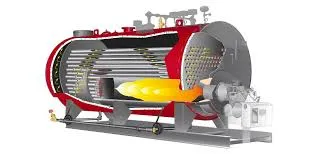
12월 . 04, 2024 20:05 Back to list
what is a biomass furnace
Understanding Biomass Furnaces An Eco-Friendly Heating Solution
As concerns over climate change and the depletion of fossil fuels grow, renewable energy sources have gained significant attention in the quest for sustainable living. Among these, biomass energy has emerged as a viable alternative, particularly through the use of biomass furnaces. But what exactly is a biomass furnace, and how does it work?
A biomass furnace is a heating system that uses organic materials—such as wood pellets, agricultural residues, or other biological matter—as fuel. Unlike traditional heating systems that rely on fossil fuels like natural gas or oil, biomass furnaces utilize the energy stored in plant materials, making them a more environmentally friendly option.
How Biomass Furnaces Work
Biomass furnaces operate by burning organic materials to produce heat. The combustion process releases carbon dioxide, but it's important to note that the carbon dioxide emitted is part of the natural carbon cycle. Plants absorb CO2 from the atmosphere during their growth, and when they are burned for energy, they release this carbon back into the atmosphere, creating a closed-loop system. This cycle mitigates the net increase of greenhouse gases, especially when compared to fossil fuels, which release stored carbon that has been underground for millions of years.
The efficiency of biomass furnaces largely depends on the type of fuel used and the technology employed. Modern biomass systems are designed to maximize combustion efficiency and minimize emissions. They often include advanced features such as automated fuel feeding systems, which ensure that the right amount of fuel is supplied for optimal burning, and high-efficiency heat exchangers that capture more of the heat generated.
Types of Biomass Fuel
Several types of biomass fuel can be used in a biomass furnace, each with unique characteristics
1. Wood Pellets One of the most common fuels, wood pellets are made from compressed sawdust and wood shavings. They have a high energy density and ignite easily, making them a popular choice for residential heating systems.
2. Wood Chips These larger pieces of wood are typically produced from logging residues or wood processing. While they require a bit more effort to ignite and maintain, they can be a cost-effective fuel option for larger systems.
what is a biomass furnace

3. Agricultural Residues Materials like straw, corn stalks, or pellets made from agricultural waste can also be used in biomass furnaces. Utilizing these residues not only provides a heating source but also helps reduce waste from farming operations.
4. Biofuels Certain types of biofuels, such as vegetable oil or biodiesel, can also be used in specially designed furnaces.
Advantages of Using Biomass Furnaces
There are several advantages to using biomass furnaces
- Renewable Resource Biomass is a renewable source of energy, as it can be replenished naturally through cultivation and growth of plants.
- Reduced Carbon Footprint As previously mentioned, biomass systems release lower levels of carbon emissions when compared to fossil fuels, thus contributing to a cleaner environment.
- Waste Reduction By using agricultural and forest residues as fuel, biomass furnaces help manage waste and promote recycling of materials.
- Energy Independence Biomass can often be sourced locally, reducing reliance on imported fuels and promoting energy security.
Conclusion
Biomass furnaces present an innovative and sustainable approach to heating that aligns well with the growing need for eco-friendly energy solutions. As technology continues to advance, these systems are becoming more efficient and accessible. For homeowners and businesses looking to reduce their carbon footprint while still achieving effective heating, biomass furnaces represent a compelling option in the renewable energy landscape. By making the switch to biomass, individuals not only contribute to a healthier planet but also take a step toward energy independence and sustainability.
-
Best Steam Boiler Design PDF Free Design Calculation & Diagram Downloads
NewsJun.10,2025
-
Hot Boiler Water Heater Efficient Heating Solutions for Home & Commercial Use
NewsJun.10,2025
-
Steam Boiler Safety Devices High-Quality Protection Valves
NewsJun.10,2025
-
Ultimate Steam Boiler Checklist for Safety & Efficiency
NewsJun.10,2025
-
Optimal Hot Water Boiler Temperature Setting Guide
NewsJun.10,2025
-
Effective Hot Water Boiler Chemical Treatment Protect & Maintain
NewsJun.09,2025
Related PRODUCTS






















